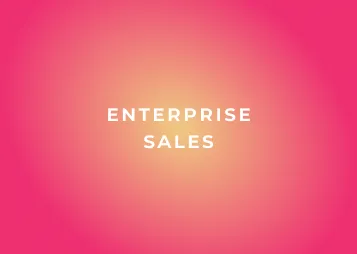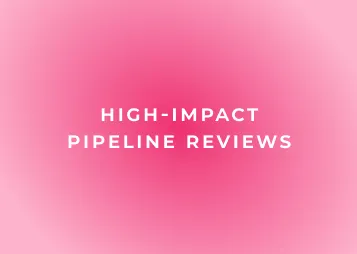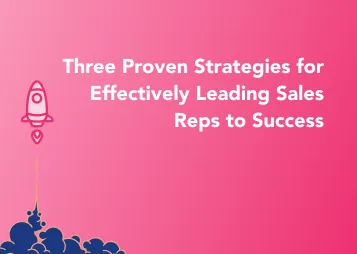By Rory Sadler
Ever feel like you're swimming against the tide in today's sales landscape?
Trust me, I've been there.
The biggest breakthrough for me in my sales career has been focusing on buyer-centric selling, also known as a buyer enablement approach.
This strategy has changed-up the way I connect with prospects throughout the sales cycle. It's led to more closed deals and so much positive feedback I've lost count.
In this article, I'm going to break down the ins and outs of buyer-centric sales and how you can put a buyer enablement strategy into action.
I'll share some personal tips on how our sales team at trumpet does things and how you can track your success with this new spin on selling.
But first, let's go back to basics and dive into what buyer enablement is all about 👇
Understanding buyer-centric sales
Why it's so important
Buyer enablement is basically just putting our buyers' needs first. Simple as that.
When I'm thinking about buyer enablement, I'm not just pushing my product; I'm creating value and figuring out how to solve the buyer's real problems.
Today's buyers are super informed and do their homework before even talking to us sellers. In fact, they're already 57% - 70% through their buying research before speaking to us. So, we've got to change our game plan to stay top of mind.
Perfecting your approach
To nail this approach, you'll want to:
- Create detailed buyer personas
- Personalise your interactions (not just using a rinse and repeat email template, account-based selling means digging a bit deeper into who you're contacting)
- Focus on delivering value
- Make the buying process super smooth
It's all about knowing who your buyers are, what motivates them, and how we can make their journey easier.
At trumpet, my sales team listens actively on demo calls, asks smart questions based on what the prospect is saying (no static question lists), and provides insights that really matter to that individual and their company.
Benefits for your businesses
Did you know that customer-centric companies are 60% more profitable?
Why? Because happy customers stick around, buy more, and tell their friends. By putting buyers first, you're not just making sales; you're building lasting relationships. It's a win-win that helps top sellers stand out in a crowded market.
Implementing buyer enablement
You're probably thinking, "Rory, how did you make your sales cycles more 'buyer-friendly'?"
I've got three top tips that I started using in my sales cycles as Sales Lead at HotJar, and now my sales team at trumpet uses them too.
Sharing (genuinely) valuable content
Spray and pray is dead. Let's just say it. To actually stand out from the crowd—and B2B is a pretty big crowd these days—you need to ask yourself these questions...
- What sales content (data, case studies, product demos, etc.) will click with this specific company?
- What info does this champion need to really sell my product internally to the key decision makers?
- How can I make this buying experience super smooth for ‘them’ not just me?
Once you have your answers, you can start tailoring that content and deliver it in a way that fits that buying org and their vibe.
My no. 1 top tip: Our sales team shares different types of content with different people in the org based on their role. What they share with the champion isn't what the CRO is going to see (or wants to see!).
Personalising the buyer journey
Getting personal is key. This is where tools like Jiminny come in handy—use those call transcripts and conversation intelligence to craft content based on what they've told you.
And hey, extra points for throwing in their own jargon in your sales pitch. Buyers love it when you speak their language, it makes them feel at home with you.
Have a killer tech stack in place
Okay, I might be a bit biased, but throwing buyer-centric tools like digital sales rooms into your tech stack is pretty crucial when building a buyer enablement strategy, right?
I use our own deal rooms to deliver super personalised buying experiences for every prospect, and guess what? They love it.
Another tool to think about is e-signature platforms—there’s nothing worse than getting a static PDF in your email and then having to hunt down a free signing tool just to sign, export, and email it back.
And lastly, any tool that lets you film or create interactive product demos is a win. Reading through product decks with screenshots of your platform? It’s going to put your buyer to sleep.
So, how do we measure success?
In 2024, it's not just about closing deals anymore; we've got to dig a bit deeper.
The classic... KPIs
We're talking customer satisfaction scores, net promoter scores, and retention rates. These numbers show if we're hitting the mark. And don't forget about customer lifetime value – it's the gold standard for measuring long-term success.
Analysing your buyers' feedback
This is a big one for me. The only way to get better is by listening to your new customers (and the ones who slipped away... Why didn't they pick you?). This is key to A/B testing your approach and ultimately growing into the seller customers rave about working with.
Keep moving forward
Lastly, we've just got to keep evolving. Remember, changing your selling behaviours isn't a one-and-done deal. It's about continuous learning and adapting to our buyers' changing needs.
My strategies from 7 years ago wouldn't even nearly cut it now! The buyer leads the way, as sellers we follow and must adapt.
Final thoughts...
Going for a buyer-centric approach will alter how you connect with your customers and close deals, for the better.
By putting the buyers' needs first, you're not just making sales; you're building lasting relationships that will set you apart from the competition. As I said, the bar to impress is pretty low, so even a few small tweaks to your current seller-centric process will make a big difference.
-------------
Rory Sadler is the Co-Founder and CEO of trumpet, he has a background in Business Management and Entrepreneurship. Since launching trumpet in December 2021, Rory has focused on enhancing buyer enablement and streamlining sales processes. His previous roles include Sales Lead at Hotjar and various leadership positions in sales and strategy, emphasising customer-centric approaches and data-driven decision-making in tech environments.





.webp)






